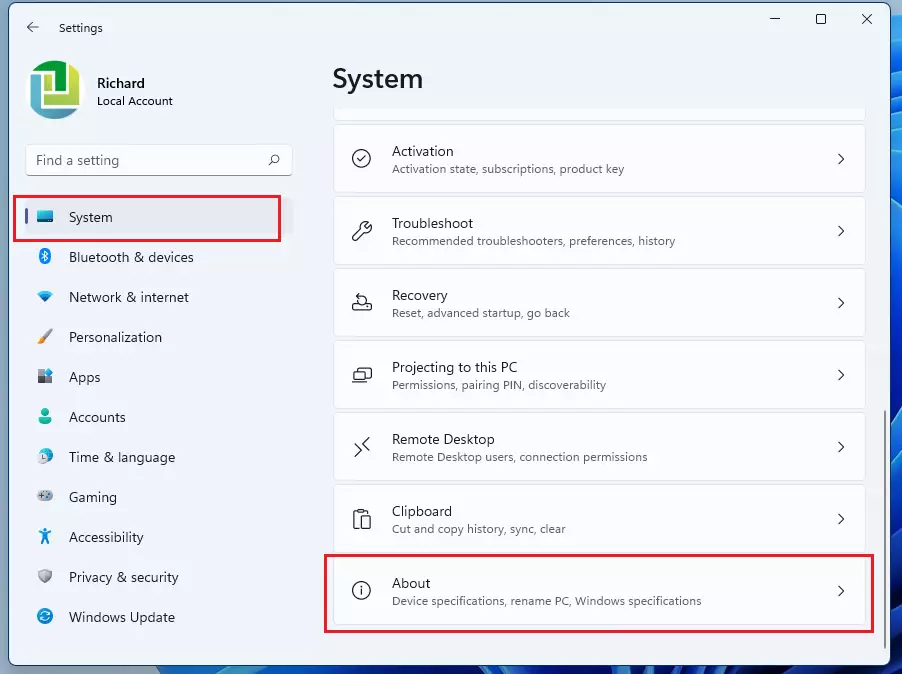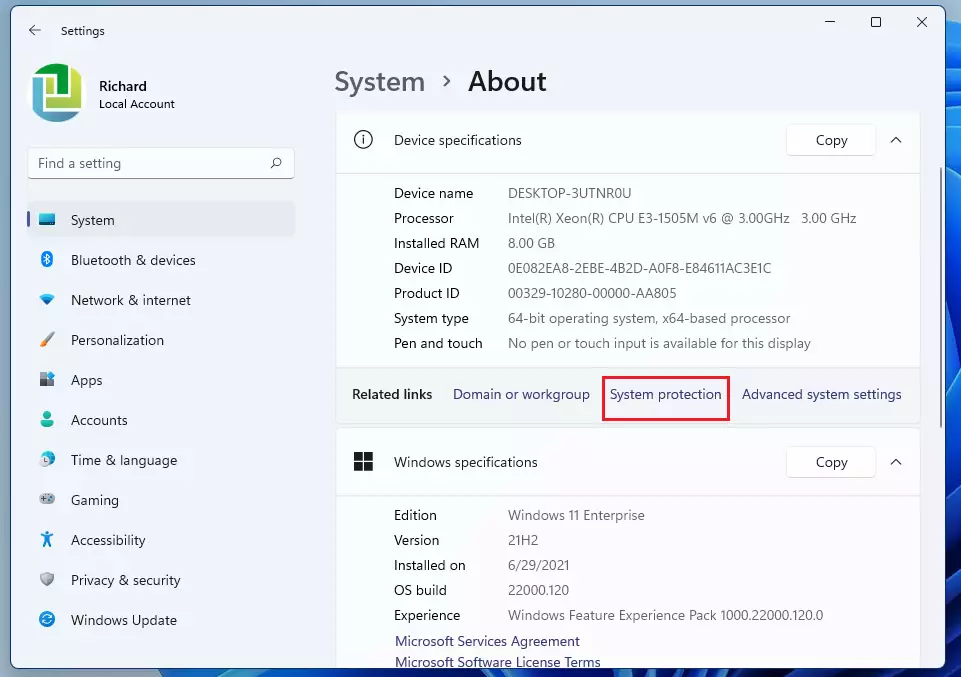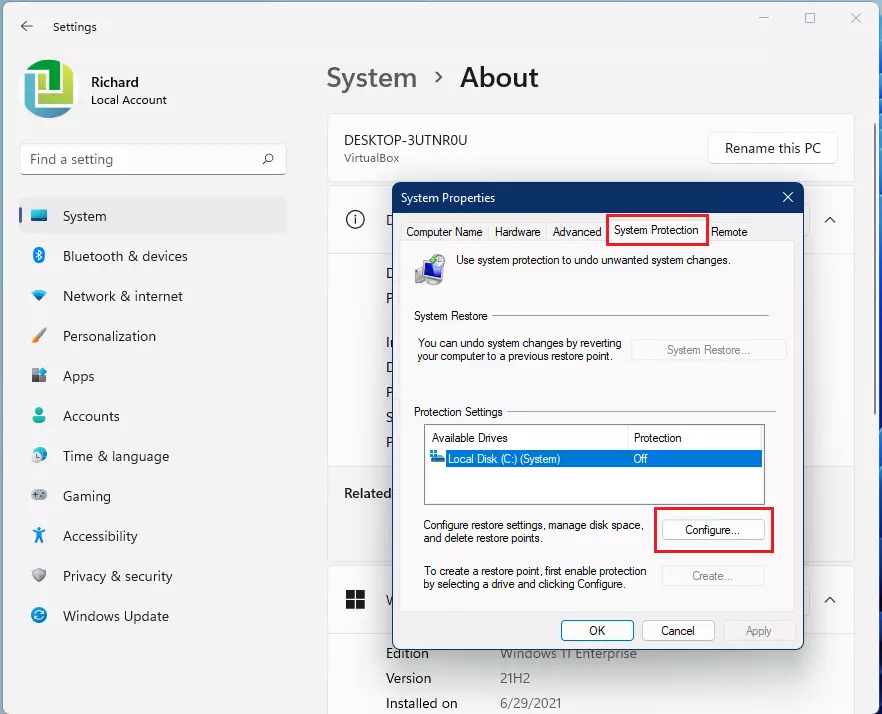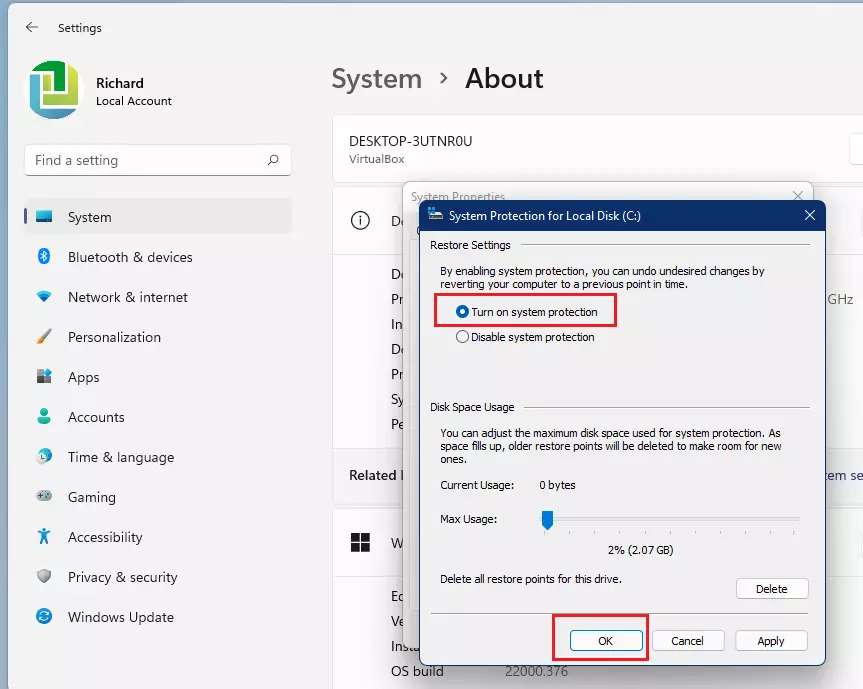This article explains how to enable or disable system protection for Windows 11.
The System Protection feature creates restore points so your computer can be restored to previous working states to resolve potential issues.
When a drive is added to System Protection, Windows creates restore points so one can revert unneeded changes and go back to a previous good state on the drive.
Each drive on a Windows system can be added or removed from System Protection. When a drive is added, Windows uses a restore point to return to a working condition using the data from a restore point. Restore points can also be deleted to free up space on systems with small storage.
Windows will purge old restore points so that new ones are created. The space reserved for restore points is allocated based on the size of the hard disk and the version of Windows being used.
How to enable System Protection for drives in Windows 11
As mentioned above, System protection for drives allows Windows to create restore points to restore the System using restore points data if the System becomes unstable.
All drives are not automatically included in Windows System protection. However, below is how to enable protection for a drive Windows 11.
Windows 11 has a centralized location for the majority of its settings. As a result, everything can be done, from system configurations to creating new users and updating Windows from its System Settings pane.
To get to System Settings, you can use the Windows key + I shortcut or click on Start ==> Settings, as shown in the image below:

Alternatively, you can use the search box on the taskbar and search for Settings. Then select to open it.
In Windows Settings, click System, and select the About tile on the right pane, as shown in the image below.

On the About settings pane, click on the System protection link as highlighted below.

On the System Protection properties window, under Available Drives, select the drive you want to include in System Protection, then click on Configure to bring up the Windows restore point settings window.

On the System Protection for Local Disk (C:) window, select the option to Turn on system protection as highlighted below.

Once system protection is enabled for the system drive, you can adjust the Max usage slider to the maximum disk space you want to be used for system protection.
Click OK when done.
That should do it!
Conclusion:
- Enabling System protection in Windows 11 allows for the creation of restore points, providing a safeguard against system instability.
- Users can easily configure protection for specific drives through the System Settings interface.
- Managing disk space allocated for restore points is crucial to ensure optimal performance.
- Disabling System protection can be done quickly through the same settings, should it be deemed unnecessary.
- Regularly review and maintain your System protection settings to benefit from a more reliable and recoverable system.

Leave a Reply